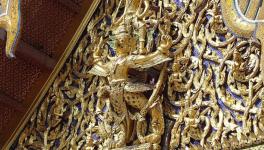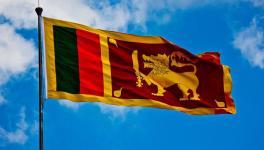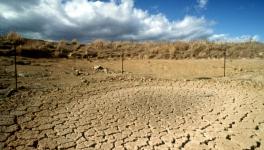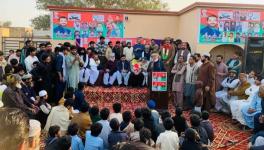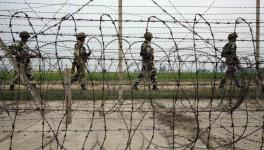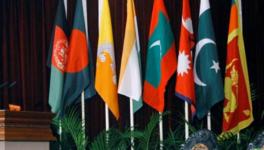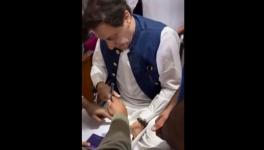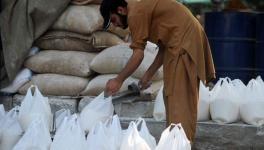Crisis in Sri Lanka a Wake-Up Call for all South Asians
Most South Asians are used to viewing our region through primarily a northern prism. That is, we tend to focus on things that happen on the India-Pakistan front. In earlier decades, our calculations used to hinge upon the role played by the United States. Of late, the Americans have been supplanted, though not yet altogether replaced, by the Chinese. Against the background of the recent developments in Sri Lanka, let us reverse this geographical bias for a change. In the spirit of the Nepal-founded and now Sri Lanka-based magazine, Himal Southasian, let us view the region through a southern prism. The economic turmoil in Sri Lanka may give us some clues to this new approach.
Three things have happened in the region in quick succession. One, the BIMSTEC Summit was held in virtual mode; two, political turmoil in Pakistan that portends yet another spell of army rule; and three, the virtual collapse of the Sri Lankan state until recently, the poster boy of the region. After all, less than a decade ago, in their voluminous An Uncertain Glory: India and its Contradictions (2013), Jean Dreze and Amartya Sen highlighted Sri Lanka’s social indicators as much better than all South Asian countries, India included.
What went wrong so suddenly? All analyses put together point to five principal explanations. First, the COVID-19 pandemic devastated the three mainstays of the nation’s economy: tourism, tea trade, and remittances from expatriate Sri Lankans working in West Asia. Second, the sudden ban on chemical fertilisers in May 2021 forced farmers to switch to organic farming. The political leadership sold the ban as an environmentally conscious decision, but its real goal was to preserve the nation’s dwindling foreign exchange reserves. The outcome was an unprecedented decline in agricultural yield, which pauperised much of the rural population.
Third, the populist policy of reducing direct taxes, although it did temporarily buoy the middle and upper classes, led to a reduction in much-needed foreign exchange reserves over the longer run. Without stable forex reserves, imports of essential commodities such as oil and several daily-use consumer items, including milk and other dairy products, were heavily affected. K. Amirthalingam, an economics professor at the University of Colombo, joked: “We are an island, and we import tinned fish,” pointing to the government’s “abject policy failure”.
Fourth, the deteriorating inter-communal situation in the aftermath of the Easter Sunday terror attacks of 2019 disrupted the economy in certain critical sectors. Since the Sri Lankan Muslims (also called Moors) are traditionally a trading community, popular opprobrium against them inevitably affected the domestic trading scene. Tourist inflows also came down considerably. And the fifth and last explanation, albeit certainly not the least, is the so-called debt trap allegedly laid by the Chinese. Through massive infrastructure development loans, the most prominent among which is the 99-year lease of the Hambantota port complex, the Sri Lankan leadership has seemingly mortgaged the future of the economy to Chinese control, rendering Sri Lanka into a virtual vassal state.
While each of the above explanations is largely well-founded, it is worth noting that barring the COVID-19 factor, the remaining four are the outcome of national politics. Accepting or rejecting foreign assistance is primarily the prerogative of the donee. To put the blame upon the donor if/when things go wrong amounts to putting the cart before the horse. It is indeed frivolous to say that big powers do not influence the politics of small nations, but it is also elementary wisdom that, in the ultimate analysis, the buck stops at the gate of the recipient nation.
No political discussion on Sri Lanka these days is complete without reference to the rivalry between India and China. In their attempts to compete for influence in the corridors of power in Colombo, each has sought to influence the Sri Lankan political class. Some have pointed to recent Chinese success in these endeavours as leading inevitably to increased penetration into the island’s economy. Recent statements made by the Chinese leadership at the highest level clearly point towards that goal.
How will India meet the challenge? The Indian elephant has an in-built handicap to face the Chinese dragon. Besides the relative size of the economies, in which China enjoys a massive advantage vis-à-vis India, my sense is that the Sri Lankans, effectively meaning the majority Sinhalese community, entertain a deep-seated suspicion about Indian intentions. This suspicion emanates mainly from the age-old Sinhalese-Tamil ethnic conflict. This element should be central to our understanding of Sri Lanka’s India policy and, by extension, its China policy.
Although they constitute almost 75% of the nation’s twenty-two million population, the Sinhalese suffer from a minority complex vis-à-vis the 70-plus million Tamils who reside a short hop across the Palk Straits in the Indian state of Tamil Nadu. (This demographic psychosis is also evident among Hindus in India today. Despite outnumbering the country’s Muslim population, many continue to subscribe to a ‘Hindus are in danger’ phobia, deviously encouraged by right-wing Hindu leaders who point to the larger global Muslim population).
The general preference of the Sinhalese for China over India can also be understood through the old maxim that familiarity breeds contempt. Arguably, the Indian decision to send the Indian Peace Keeping Force (IPKF) to Sri Lanka in 1987 to play honest broker in the Sinhalese-Tamil civil war was particularly unhelpful. Contra expectations of the Rajiv Gandhi government, the deployment earned the trust neither of the Sinhalese nor the Tamils. Introducing a foreign army to quell a civil war is always fraught with risk, especially so when both contending sides view that army as partisan.
One last point. The Sri Lankan crisis has highlighted the salience of that enduring puzzle about long-term growth and development: is a free economy with less social spending the way to proceed, or should one invest in a welfare state with limited ‘growth’ but greater mass well-being? In the early 1990s, when the failure of the state-controlled economy of India seemed unbearable, the Narasimha Rao-Manmohan Singh duo chose to open the economy gradually. In the short term, the results were dramatic, but much of that early promise appears on the verge of collapse today as jobless growth has created unprecedented levels of unemployment.
Sri Lanka anticipated India’s 1991 moment by almost twenty years. In the late 1970s, its ‘socialist’ model was replaced by an open economy, which did indeed deliver positive results for successive decades. But now that innings appears under severe strain, and people are once again talking about greater state intervention to tame the toxic mix of unscrupulous privatisation and renewed Sinhalese ethnic hyper-nationalism. The Sri Lankan crisis has thus come at the right time. It is a warning to all South Asians—do not just bail us out of our mess, but also learn from our mistakes, lest you suffer our fate too.
Postscript: No discussion on South Asia can be complete without reference to the state of democracy in the region. All global indicators suggest a downslide, thanks in no small measure to developments in the region’s two traditionally stable democracies, India and Sri Lanka. Today, Nepal is the lone South Asian country to offer some hope.
Kanak Mani Dixit, one of Nepal’s leading commentators, was not off the mark when he wrote in the Nepali Times: “Howsoever decrepit the polity might look and feel, for now, Nepal is a haven within South Asia for its openness, fundamental freedoms and inter-community relations. It must resist the movement towards ‘closed society’ that is evident in the rest of the region including Big India, and nor should the liaison with Beijing require compromising on existing freedoms.”
The author is a Senior Fellow at the Institute of Social Sciences, New Delhi. He was an ICSSR National Fellow and professor of South Asian Studies at JNU. The views are personal.
Get the latest reports & analysis with people's perspective on Protests, movements & deep analytical videos, discussions of the current affairs in your Telegram app. Subscribe to NewsClick's Telegram channel & get Real-Time updates on stories, as they get published on our website.











